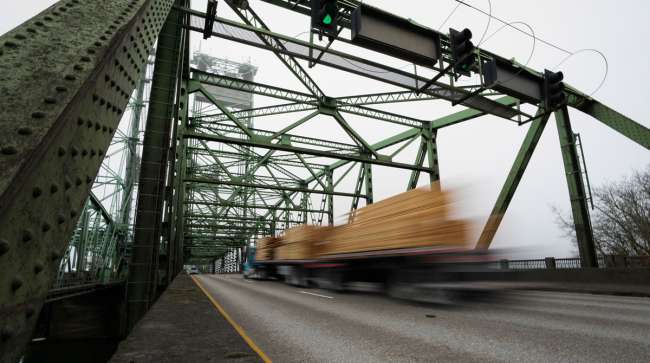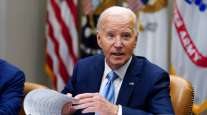Senior Reporter
Biden’s ‘Infrastructure Decade’ Becoming More Concrete

[Stay on top of transportation news: Get TTNews in your inbox.]
WASHINGTON — A bipartisan infrastructure law topping $1 trillion is fueling a wave of freight and passenger mobility projects nationwide this summer.
The Infrastructure Investment and Jobs Act, considered a bipartisan legislative achievement enacted nearly three years ago, is assisting state transportation agencies with large-scale transit and supply chain connectivity improvements.
This pillar of President Joe Biden’s “Build Back Better” domestic agenda is often cited by supporters as the beginning of a transformative “infrastructure decade” capable of modernizing much of the transportation landscape.
Nearly every month since its enactment in November 2021, the Biden administration has been announcing a series of funds that were made possible by the 10-year law.
Want more news? Listen to today's daily briefing above or go here for more info
On July 30, for instance, the Federal Aviation Administration indicated it had awarded $427 million for airport-related projects in 39 states. Two weeks earlier, Transportation Secretary Pete Buttigieg announced more than $5 billion specifically for repairing, rehabilitating and restoring some of the nation’s most prominent bridges. Buttigieg said July 17, “There are currently about 3,000 fewer bridges in poor condition than when our administration began, and today we are proud to announce funding to repair or replace 13 of America’s largest and economically significant bridges.”
Overall, billions of dollars have been committed for maintenance and construction projects large and small in urban areas and rural regions. Buttigieg told reporters after a Capitol Hill hearing: “We definitely want to make sure people understand where their taxpayer dollars are going. And so part of what I’ll be doing on the road is celebrating some of these award announcements and increasingly — not just the announcement of an award — but the completion of some of the projects we announced a few years ago.”

Buttigieg
“The nature of infrastructure projects is they take a while,” he continued. “Many of the ribbons will probably be cut by my successor, no matter how long or how short my future in this job is. But we are also already seeing some of the first projects get done. And so I’m excited to mix more groundbreakings and ribbon-cuttings in with the award announcements we’ve been doing.”
Most congressional Democrats tout the administration’s infrastructure agenda as well as the bipartisan law’s potential long-term impact. During a hearing last month, Sen. Gary Peters (D-Mich.), chairman of the Surface Transportation, Maritime, Freight, and Ports Subcommittee, championed the IIJA. “These projects aren’t just building new infrastructure,” the senator said. “They are improving public health, economic development, the future of clean energy and so much more. We’re just beginning to see the full effect of this legislation. That’s why our work is far from over.”
Many senior Republicans, meanwhile, continue to question aspects of Biden’s “Build Back Better” regulatory trajectory. Rep. Rick Crawford (R-Ark.), chairman of the influential Highways and Transit Subcommittee, recently expressed concern about the implementation of regulations central to the White House’s response to climate change. “Rules and regulations continue to be considered that mandate certain technologies that may not be ready for mass adoption, particularly as it relates to the trucking sector,” Crawford told colleagues during a subcommittee hearing July 24.
Jeff Loftus of FMCSA joins TT’s Seth Clevenger to discuss the current outlook on ADAS technology and how it will affect the industry at large. Tune in above or by going to RoadSigns.ttnews.com.
“This can stifle the safe and efficient movement of freight, have safety implications on other roadway users, and may needlessly increase costs for consumers,” the subcommittee chairman went on.
Crawford is a co-sponsor of a procedural measure known as a Congressional Review Act resolution that would pause a new federal emissions rule for heavy-duty vehicles. During much of Biden’s tenure, a cadre of Republican policymakers have taken aim at the White House’s push of transportation emerging technologies as well as electric vehicles.
American Trucking Associations is among the groups supportive of the resolution’s aim. ATA Chief Advocacy and Public Affairs Officer Ed Gilroy said in May: “We appreciate [lawmakers] drawing attention to this important issue and look forward to continuing to work with champions in Congress, coalition partners in industry and federal regulators to develop realistic, technology-neutral national emissions standards that will benefit our environment and set our supply chain up for success.”





